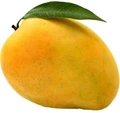
According to a farmer, erratic climatic conditions combined with the extreme heatwave and insect infestations would result in a significant decrease in mango production. While Horticulture officials are putting in place countermeasures, farmers claim that it is too late because a big number of the trees have already been affected.
They requested the state government to pay the minimum necessary.
S Chinnasamy, who runs a mango plantation in Karimangalam, told TNIE, "Usually by this time we can see visible signs of mangoes on trees, but this year we haven't even seen the flowers begin." Mango trees are unable to flower as a result of the weather. Flowers often blossom only in dry, cool conditions.
"Nearly 100 acres of mango orchards in our region alone have failed to produce flowers," claimed K Saravanan of Manjavadi. Insect infestation is one of the primary causes of this; these pests have eaten away most of the flowers, and numerous branches have perished as a result.
We are unable to reach the areas and take any countermeasures since trees can grow to heights of 10 -15 meters. We can just stand by and watch as these insects destroy our trees."
"Normally, the flowering season is between November and December," R Venkatraman of Karimangalam said, "but the NorthEast monsoon was still strong during this period." Mango trees did not produce many blooms since flowers require dry and cool climatic conditions to thrive.
When TNIE talked with Malini, the Deputy Director of Horticulture, she stated, "In terms of climatic circumstances, there is nothing that can be spoken or done. However, in terms of pest attacks, we have noticed two types of infestation: the leafhopper and the leaf webber.
While the hoppers feed on the leaf, the webbers prevent photosynthesis. We have requested the assistance of TNAU entomology researchers. We've already raised awareness about the precaution, and they've offered some protection."











